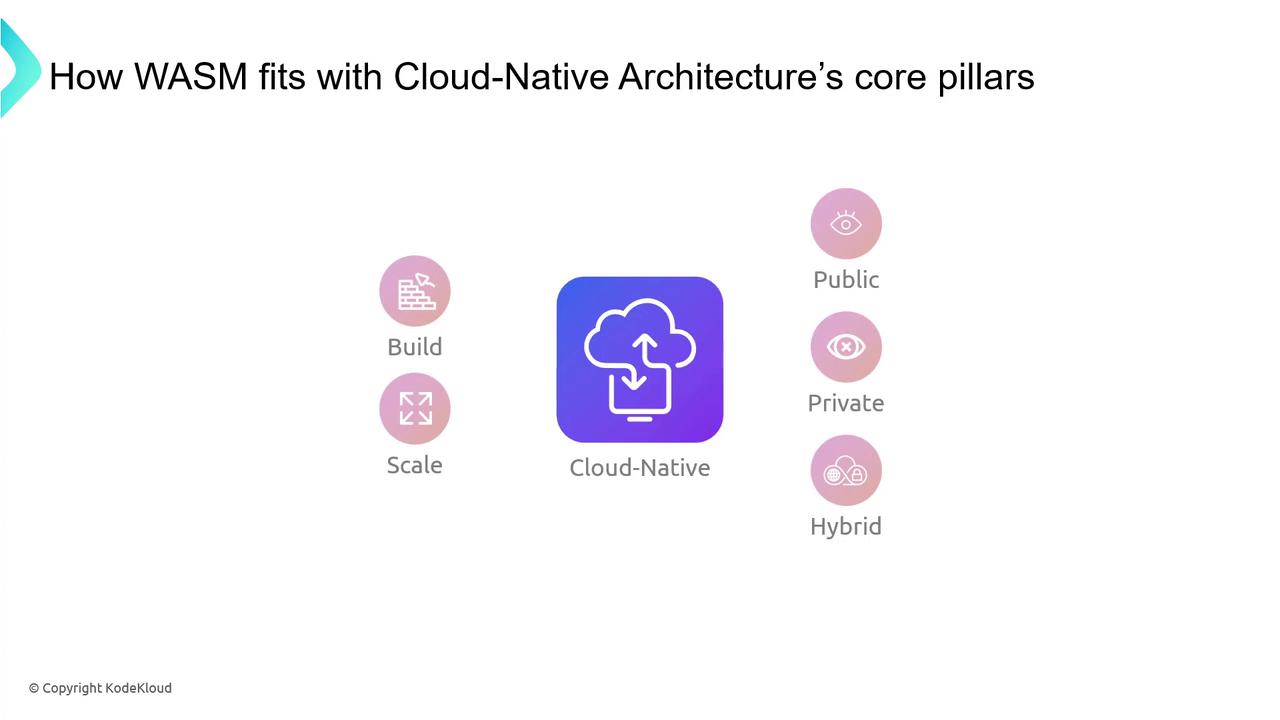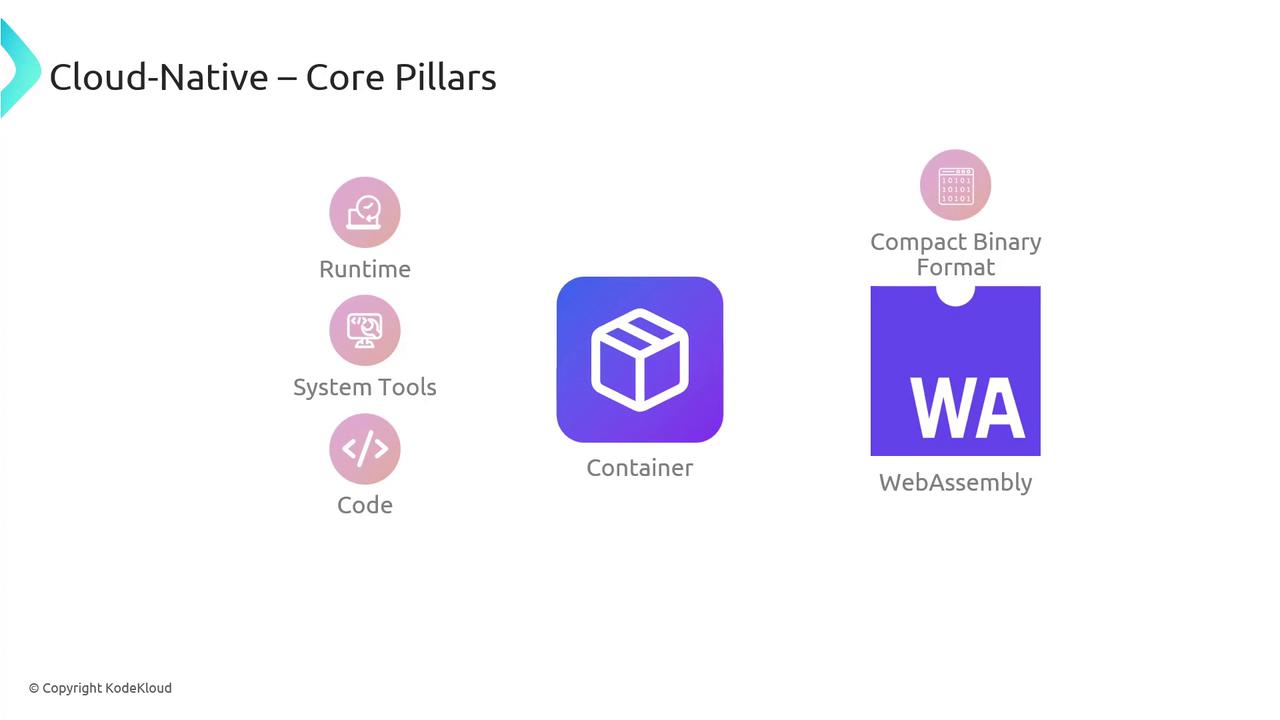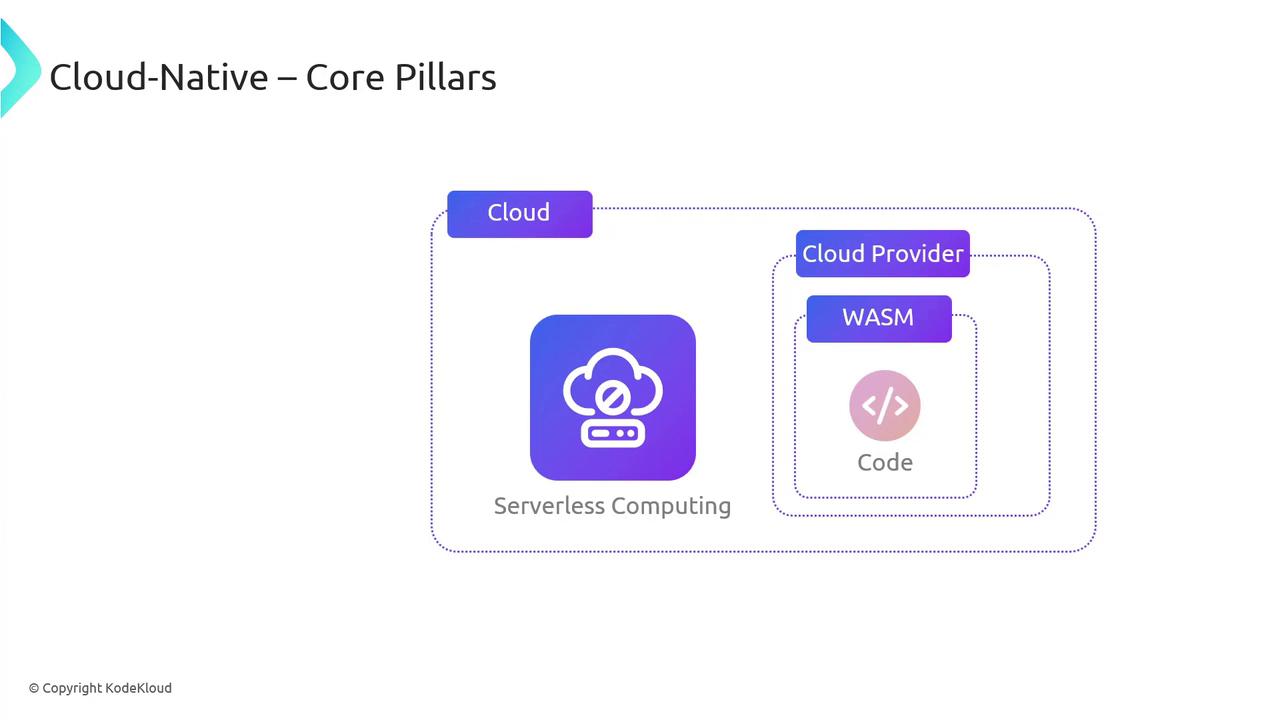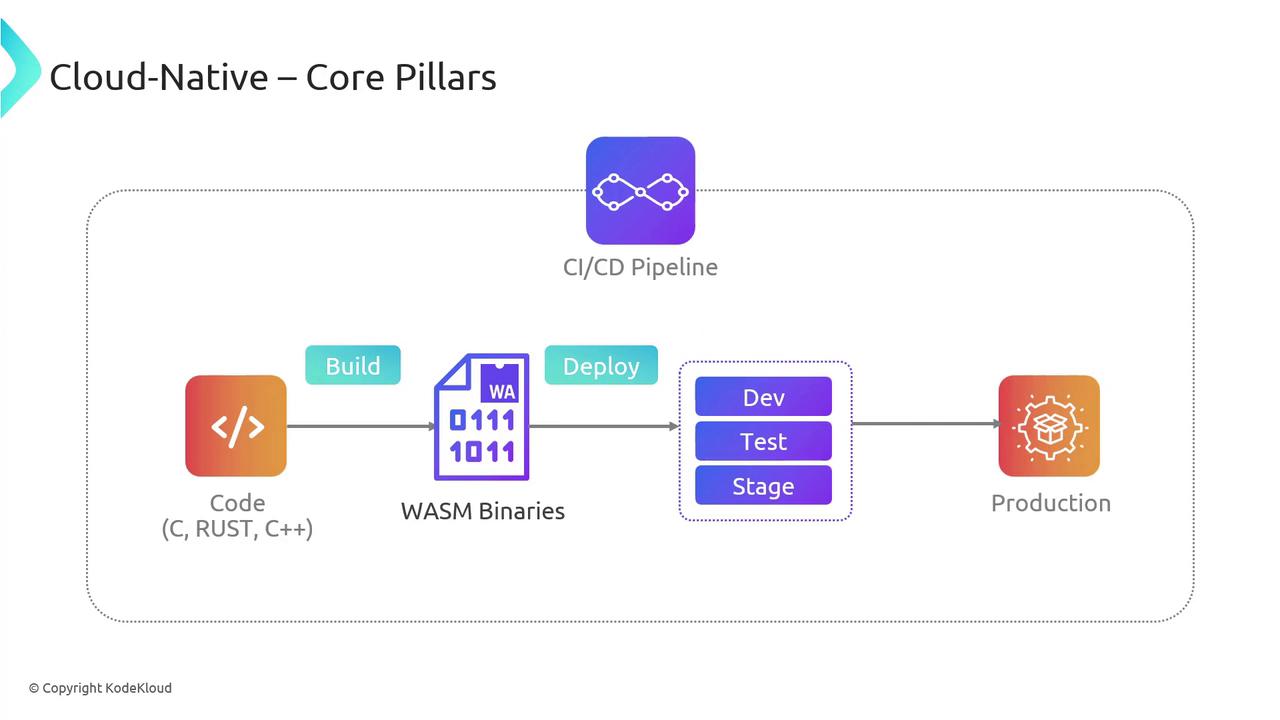Exploring WebAssembly (WASM)
Future WebAssembly in Cloud
Introduction to Cloud Native WASM
Cloud-native applications are like beachfront homes: designed to endure shifting sands, high tides, and relentless sun. They automatically scale on demand, recover from failures, and adapt to traffic spikes. WebAssembly (WASM) complements this model with near-native performance, strict sandboxing, and cross-platform portability.
By merging WASM with cloud-native design, you get fast-starting services, minimal attack surfaces, and seamless deployments across any infrastructure.
![]()
When you deploy WASM modules alongside containers and serverless functions, your applications handle peak traffic, self-heal from faults, and deliver ultra-low latency to users—no matter where they are.
Bytecode Alliance and Standalone Runtimes
The Bytecode Alliance unites industry leaders like Mozilla, Fastly, Intel, and Red Hat to standardize secure WASM runtimes outside the browser. Two flagship projects include:
| Runtime | Compiler Type | Description |
|---|---|---|
| Wasmtime | JIT | Production-grade WASM runtime with fast dynamic compilation. |
| Lucet | AOT | Ahead-of-time compiler for instant startup and minimal footprint. |
Note
Both Wasmtime and Lucet target cloud scenarios—from microservices to edge functions—offering predictable performance and strict isolation.

Edge Compute and Kubernetes Integration
Fastly Compute@Edge leverages WASM to run JavaScript, Rust, or C++ workloads at edge locations worldwide—shrinking response times and offloading origins. Meanwhile, Krustlet brings WASM to Kubernetes: it acts as a Kubelet replacement so you can schedule WASM modules (.wasm images) alongside containers.
- Compute@Edge: Ultra-low latency at edge POPs
- Krustlet: Run WASM pods through native Kubernetes APIs
Core Pillars of Cloud-Native Architecture and WASM’s Role
Cloud-native philosophy centers on resilient, scalable services in dynamic infrastructures—public, private, or hybrid clouds.

Microservices
Breaking monoliths into independent microservices accelerates development cycles and isolates failures. Embedding WASM runtimes in each service ensures consistent sandboxing and performance across environments—from local dev to production clusters.
Containers
Containers package code, libraries, and dependencies into portable units. Augment them with WASM for plugins, extensibility, or sidecar logic—benefiting from small binary sizes and stronger security boundaries.

Serverless
Serverless platforms let you focus on functions, not infrastructure. Compiling functions to WASM means multi-language support, fast cold starts, and a unified, verifiable runtime across providers.

Note
WASM-based serverless functions can run on any host that implements the WebAssembly System Interface (WASI), simplifying vendor portability.
CI/CD Pipelines
Automated CI/CD workflows compile code (e.g., Rust, Go, C++) into WASM modules, run uniform tests in headless environments, and deploy artifacts across clusters or edge points—accelerating releases and ensuring consistency.

Links and References
- Cloud Native Computing Foundation (CNCF)
- Kubernetes Documentation
- WebAssembly.org
- Bytecode Alliance
- Docker
- CI/CD Best Practices
Watch Video
Watch video content